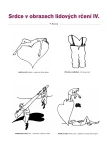Rehabilitation after myocardial infarction (III)
Authors:
doc. MUDr. Václav Chaloupka, CSc.; doc. MUDr. Lubomír Elbl, CSc.
Authors‘ workplace:
FN Brno-Bohunice
; oddělení funkčního vyšetřování
Published in:
Kardiol Rev Int Med 2005, 7(4): 187-190
Category:
Editorial
Overview
The authors devote the third part of patients’ rehabilitation
after myocardial infarction to some general aspects related to this problems. They address both
safety of rehabilitation programs and patients’ inclusion aspects. They pay special attention to the
impact of training on patients’ prognosis and to the cardioprotective effect of physical exercise. They
conclude with rules for practical training of patients with coronary heart disease.
Keywords
myocardial infarction – program of rehabilitation – cardioprotective effect of physical exercise – coronary heart disease
Sources
1. Chaloupka V, Elbl L. Rehabilitace po infarktu myokardu. Kardiol Rev 2005; 7(1): 5–9.
2. Chaloupka V, Elbl L. Rehabilitace po infarktu myokardu II. Kardiol Rev 2005; 7(2): 73–76.
3. Franklin BA, Bonzheim K, Gordon S, Timmis GC. Safety of medically supervised cardiac rehabilitation exercise therapy: a 16-year follow-up. Chest 1998; 114: 902–906.
4. Elbl L, Chaloupka V, Tomášková I et al. Silový trénink u nemocných po akutním infarktu myokardu se sníženou ejekční frakcí levé komory srdeční. Vnitř Lék 2005; 51(1): 41–47.
5. Ades PA. Cardiac rehabilitation and secondary prevention of coronary heart disease. N Eng J Med 2001; 345: 892–902.
6. Mark DB, Lauer MS. Exercise capacity: the prognostic variable that doesn't get enough respect. Circulation 2003; 108: 1534–1536.
7. Myers J, Prakash M, Froelicher V et al. Exercise capacity and mortality of men referred for exercise testing. N Engl J Med 2002; 346: 793–801.
8. Kavanagh T, Mertens DJ, Ham LF et al. Prediction of long-term prognosis in 12 169 men referred for cardiac rehabilitation. Circulation 2002; 106: 666–671.
9. Smart N, Marwick TH. Exercise training for patients with heart failure: a systematic review of factors that improve mortality and morbidity. Am J Med 2004; 116(10): 693–706.
10. Shephard RJ, Balady GJ. Exercise as cardiovascular therapy. Circulation 1999; 99: 963–972.
11. Lakka TA, Venalainen JM, Rauramaa R et al. Relation of leisure-time physical activity and cardiorespiratory fitness to the risk of acute myocardial infarction.
N Engl J Med 1994; 330: 1549–1554.
12. Tanasescu M, Leitzmann MF, Rimm EB et al. Exercise type and intensity in relation to coronary heart disease in men. JAMA 2002; 288: 1994–2000.
13. O’Connor GT, Buring JE, Yusuf S et al. An overview of randomized trials of rehabilitation with exercise after myocardial infarction. Circulation 1989; 80: 234–244.
14. Oldrige NB, Guyatt GH, Fisher ME, Rimm AA. Cardiac rehabilitation after myocardial infarction: combined experience of randomized clinical trials. JAMA 1988; 260: 945–950.
15. The Scandinavian Simvastatin Survival Study Group. Randomized trial of cholesterol lowering in 4444 patients with coronary heart disease: the Scandinavian Simvastatin Survival Study (4S). Lancet 1994; 344: 1383–1389.
16. Sacks FM, Pfeffer MA, Moye L et al. The effect of pravastatin on coronary events after myocardial infarction in patients with average cholesterol levels. N Engl J Med 1996; 335: 1001–1009.
17. Shepherd J, Cobbe SM, Ford I et al. Prevention of coronary heart disease with pravastatin in men with hypercholesterolemia. N Engl J Med 1995; 333: 1301–1307.
18. The Long-term Intervention with Pravastatin in Ischemic Disease (LIPID) Study group. Prevention of cardiovascular events and death with pravastatin in patients with coronary heart disease and a broad range of initial cholesterol levels. N Engl J Med 1998; 339: 1349–1357.
19. Niebauer J, Hambrecht R, Velich T et al. Attenuated progression of coronary artery disease after 6 years of multifactorial risk intervention: role of physical exercise. Circulation 1997; 96: 2534–2541.
20. Haskell WL, Alderman EL, Fair JM et al. Effects of intensive multiple risk factor reduction on coronary atherosclerosis and clinical cardiac events in men and women with coronary artery disease. The Stanford Coronary Intervention Prevention Project (SCRIPT). Circulation 1994; 89: 975–990.
21. Dimmeler S, Zeiher AM. Exercise and cardiovascular health: get active to “AKTivate” your endothelial nitric oxid synthase. Circulation 2003; 107: 3118–3120.
22. Hambrecht R, Wolf A, Gielen S et al. Effect of exercise on coronary endothelial function in patients with coronary artery disease. N Eng J Med 2000; 342: 454–460.
23. LaMonde MJ, Durstine JL, Yanowitz FG et al. Cardiorespiratory fitness and C reactive protein among tri-ethnic sample of women. Circulation 2002; 106: 403–406.
24. Grundy SM, Hansen B, Smith SC et al. Clinical management of metabolic syndrome: report of the American Heart Association/National Heart, Lung, and Blood Institute/American Diabetes Association conference on scientific issue related to management. Circulation 2004; 109: 551–556.
25. Laughlin MH, Oltman C, Bowles DK. Exercise training – induced adaptation in the coronary circulation. Med Sci Sport Exerc 1998; 30: 352–360.
26. Bolli R. The late phase of preconditioning. Circ Res 2000; 87: 972–983.
27. Iellamo F, Legramante JM, Massaro MA et al. Effects of residential exercise training on baroreflex sensitivity and heart rate variability in patients with coronary artery disease: a randomised, controlled study. Circulation 2000; 102: 258–2592.
28. Rauramaa R, Li G, Vaisanen SB. Dose-response and coagulation and hemostatic factors. Med Sci Sports Exerc 2001; 33: S516–S520.
29. Chaloupka, V, Vaněk P, Juráň F et al. Nemocniční, posthospitalizační a lázeňská rehabilitace u nemocných s ICHS. Cor Vasa 1998; 40: K243–K251.
30. Mayer K, Samek L, Schwaibold M et al. Interval training in patients with severe chronic heart failure: analysis and recommendation procedures. Med Sci Sports Exerc 1997; 29: 306–312.
31. Borg GAV. Psychophysical bases of perceived exertion. Med Sci Sports Exerc 1982; 14: 377–381.
Labels
Paediatric cardiology Internal medicine Cardiac surgery CardiologyArticle was published in
Cardiology Review

2005 Issue 4
Most read in this issue
- Left Main Coronary Artery Occlusion Induced Acute Myocardial Infarction: Experiences from the Beginning of the Third Millenium
- Losartan in clinical studies
- Rehabilitation after myocardial infarction (III)
- Coronary artery disease and kidney disease
